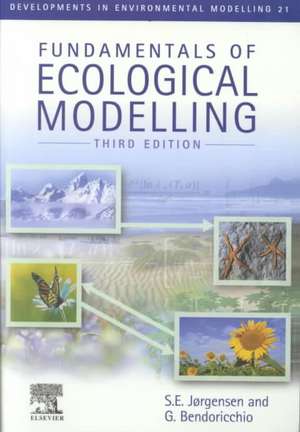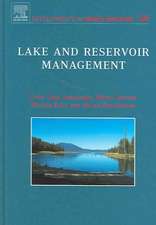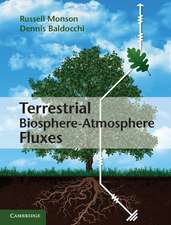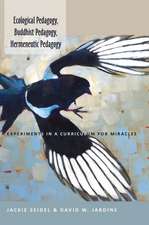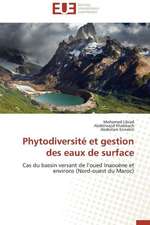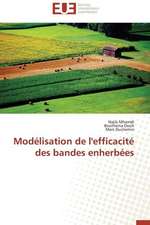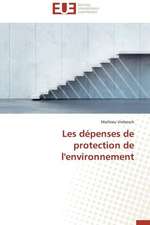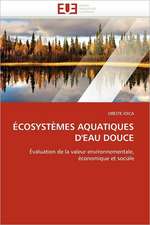Fundamentals of Ecological Modelling: Developments in Environmental Modelling, cartea 21
Autor S.E. Jorgensen Editat de G. Bendoricchioen Limba Engleză Paperback – 14 aug 2001
The Third Edition features:
• A detailed discussion and step-by-step outline of the modelling procedure.
• An account of different model types including overview tables, examples and illustrations.
• A comprehensive presentation of the submodels and unit processes used in modelling.
• In-depth descriptions of the latest modelling techniques.
• Structured exercises at the end of each chapter.
• Three mathematical appendices and a subject index.
This practical and proven book very effectively combines the theory, methodology and applications of ecological modelling. The new edition is an essential, up-to-date guide to a rapidly growing field.
| Toate formatele și edițiile | Preț | Express |
|---|---|---|
| Paperback (1) | 0.00 lei Indisponibil | |
| ELSEVIER SCIENCE – 14 aug 2001 | 0.00 lei Indisponibil | |
| Hardback (1) | 391.47 lei 36-50 zile | |
| ELSEVIER SCIENCE – 27 feb 2011 | 391.47 lei 36-50 zile |
Preț: 454.83 lei
Preț vechi: 590.69 lei
-23% Nou
Puncte Express: 682
Preț estimativ în valută:
87.04€ • 90.54$ • 71.86£
87.04€ • 90.54$ • 71.86£
Carte tipărită la comandă
Preluare comenzi: 021 569.72.76
Specificații
ISBN-13: 9780080440286
ISBN-10: 0080440282
Pagini: 544
Dimensiuni: 156 x 234 mm
Greutate: 1 kg
Ediția:3
Editura: ELSEVIER SCIENCE
Seria Developments in Environmental Modelling
ISBN-10: 0080440282
Pagini: 544
Dimensiuni: 156 x 234 mm
Greutate: 1 kg
Ediția:3
Editura: ELSEVIER SCIENCE
Seria Developments in Environmental Modelling
Cuprins
Preface, Third Edition. Acknowledgements.
1. Introduction.
Physical and mathematical models.
Models as a management tool.
Models as a scientific tool.
Models and holism.
The ecosystem as an object for research.
Outline of the book.
The development of ecological and environmental models.
State of the art in the application of models.
2. Concepts of Modelling.
Introduction.
Modelling elements.
The modelling procedure.
Types of model.
Selection of the model type.
Selection of model complexity and structure.
Verification.
Sensitivity analysis.
Parameter estimation.
Validation.
Ecological modelling and quantum theory.
Modelling constraints.
Problems.
3. Ecological Processes.
Space and time resolution.
Mass transport.
Mass balance.
Energetic factors.
Settling and resuspension.
Chemical reactions.
Chemical equilibrium.
Hydrolysis.
Redox.
Acid-Base.
Adsorption and ion exchange.
Volatilization.
Biogeochemical cycles in aquatic environments.
Photosynthesis.
Algal growth.
Zooplankton growth.
Fish growth.
Single population growth.
Ecotoxicological processes.
Problems.
4. Conceptual Models.
Introduction.
Application of conceptual diagrams.
Types of conceptual diagrams.
The conceptual diagram as modelling tool.
Problems.
5. Static Models.
Introduction.
Network models.
Network analysis.
ECOPATH software.
Response models.
6. Modelling Population Dynamics.
Introduction.
Basic concepts.
Growth models in population dynamics.
Interaction between populations.
Matrix models.
Problems.
7. Dynamic Biogeochemical Models.
Introduction.
Application of dynamic models.
Eutrophication models I: Overview and two simple eutrophication models.
Eutrophication models II: A complex eutrophication model.
A wetland model.
Problems.
8. Ecotoxicological Models.
Classification and application of ecotoxicological models.
Environmental risk assessment.
Characteristics and structure of ecotoxicological models.
An overview: The application of models in ecotoxicology.
Estimation of ecotoxicological parameters.
Ecotoxicological case study I: Modelling the distribution of chromium in a Danish fjord.
Ecotoxicological case study II: Contamination of agricultural products by cadmium and lead.
Ecotoxicological case study III: A mercury model for Mex Bay, Alexandria.
Fugacity fate models.
Problems.
9. Recent Developments in Ecological and Environmental Modelling.
Introduction.
Ecosystem characteristics.
Structurally dynamic models.
Four illustrative structurally dynamic case studies.
Application of chaos theory in modelling.
Application of catastrophe theory in ecological modelling.
New approaches in modelling techniques.
Problems.
Appendix 1. Mathematical Tools.
Vectors.
Matrices.
Square matrices, eigenvalues and eigenvectors.
Differential equations.
Systems of differential equations.
Numerical methods.
Appendix 2. Definition of Expressions, Concepts and Indices.
Appendix 3. Parameters for Fugacity Models.
References.
Subject Index.
1. Introduction.
Physical and mathematical models.
Models as a management tool.
Models as a scientific tool.
Models and holism.
The ecosystem as an object for research.
Outline of the book.
The development of ecological and environmental models.
State of the art in the application of models.
2. Concepts of Modelling.
Introduction.
Modelling elements.
The modelling procedure.
Types of model.
Selection of the model type.
Selection of model complexity and structure.
Verification.
Sensitivity analysis.
Parameter estimation.
Validation.
Ecological modelling and quantum theory.
Modelling constraints.
Problems.
3. Ecological Processes.
Space and time resolution.
Mass transport.
Mass balance.
Energetic factors.
Settling and resuspension.
Chemical reactions.
Chemical equilibrium.
Hydrolysis.
Redox.
Acid-Base.
Adsorption and ion exchange.
Volatilization.
Biogeochemical cycles in aquatic environments.
Photosynthesis.
Algal growth.
Zooplankton growth.
Fish growth.
Single population growth.
Ecotoxicological processes.
Problems.
4. Conceptual Models.
Introduction.
Application of conceptual diagrams.
Types of conceptual diagrams.
The conceptual diagram as modelling tool.
Problems.
5. Static Models.
Introduction.
Network models.
Network analysis.
ECOPATH software.
Response models.
6. Modelling Population Dynamics.
Introduction.
Basic concepts.
Growth models in population dynamics.
Interaction between populations.
Matrix models.
Problems.
7. Dynamic Biogeochemical Models.
Introduction.
Application of dynamic models.
Eutrophication models I: Overview and two simple eutrophication models.
Eutrophication models II: A complex eutrophication model.
A wetland model.
Problems.
8. Ecotoxicological Models.
Classification and application of ecotoxicological models.
Environmental risk assessment.
Characteristics and structure of ecotoxicological models.
An overview: The application of models in ecotoxicology.
Estimation of ecotoxicological parameters.
Ecotoxicological case study I: Modelling the distribution of chromium in a Danish fjord.
Ecotoxicological case study II: Contamination of agricultural products by cadmium and lead.
Ecotoxicological case study III: A mercury model for Mex Bay, Alexandria.
Fugacity fate models.
Problems.
9. Recent Developments in Ecological and Environmental Modelling.
Introduction.
Ecosystem characteristics.
Structurally dynamic models.
Four illustrative structurally dynamic case studies.
Application of chaos theory in modelling.
Application of catastrophe theory in ecological modelling.
New approaches in modelling techniques.
Problems.
Appendix 1. Mathematical Tools.
Vectors.
Matrices.
Square matrices, eigenvalues and eigenvectors.
Differential equations.
Systems of differential equations.
Numerical methods.
Appendix 2. Definition of Expressions, Concepts and Indices.
Appendix 3. Parameters for Fugacity Models.
References.
Subject Index.
Recenzii
Reviews of the previous edition:
"[Ecological modelling] is obviously a huge area, and this book, which is both an overview and a how-to guide, covers an enormous amount of it." --Global Ecology and Biogeography Letters
"Excellent synoptique." --Information Eaux
"...this book will be an invaluable source of information for a variety of engineers and ecologists, who have a mathematical background and may wish to gain an introduction to the rapidly growing field of ecological and environmental modelling. This book will also be very adequate for courses on this subject." --International Journal of Environmental Analytical Chemistry
"[Ecological modelling] is obviously a huge area, and this book, which is both an overview and a how-to guide, covers an enormous amount of it." --Global Ecology and Biogeography Letters
"Excellent synoptique." --Information Eaux
"...this book will be an invaluable source of information for a variety of engineers and ecologists, who have a mathematical background and may wish to gain an introduction to the rapidly growing field of ecological and environmental modelling. This book will also be very adequate for courses on this subject." --International Journal of Environmental Analytical Chemistry
